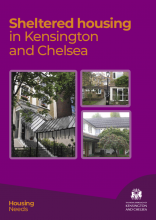Care homes and housing options
Care Homes
Where it is not possible to continue living in your own home even with the support of others moving to a care home can offer a comfortable and safe alternative.
Some also offer ‘respite’ care, which are short-term placements for people:
- after they have been in hospital
- or for people who have carers that need to take a break.
All homes must be registered and regulated by the Care Quality Commission (CQC). The CQC regularly visits and inspects care homes to ensure they are providing appropriate standards of care. They can instruct care homes to improve where necessary. The CQC maintains a directory of all registered homes on their website.
There are two main types of care home:
- Residential homes offer a place to live with care and support to suit your needs
- Nursing homes offer 24-hour medical care from a qualified nurse as well as other appropriate care and support to meet your needs
Some homes often specialise in areas such as:
- Older-aged residents
- People living with dementia
- People living with mental illness
- People living with a physical disability
Visit the Care Quality Commision (CQC) website for more information care homes and find one.
Visit the People First website for information on finding somewhere to live.
Visit the People First website for information on paying for a care home.
Sheltered housing
Sheltered housing consists of self-contained flats within buildings. They provide a safe and secure environment for older people. It allows you to have your own home and get reassurance from staff on-site during working hours. Most schemes have communal lounge areas and gardens with some organising activities.
- Sheltered housing can be rented from the Council and several registered social landlords.
- It is available for people aged 60 years and over (or 55 years and disabled).
- There may be restrictions about the number of hours you can work to qualify for sheltered housing.
The demand for sheltered housing is high. The waiting time depends on your priority for housing and how flexible you are about which schemes you will consider.
If you are interested in sheltered accommodation and would like to find out how to apply. Contact the Housing Opportunities Team on 020 7361 3008.
Visit the People First website for information on supported and sheltered housing.
Extra care housing
Extra care housing is a specialist form of housing for older people. Residents live in their flats but have access to care and support services on-site 24 hours a day if they need it. This means extra care housing can accommodate people with a range of needs. This includes people who live in residential care.
Extra care housing schemes can feature communal spaces for residents, for example:
- activity rooms
- a hairdressing salon
- a restaurant
and can offer properties either for purchase (private) or for rent from the Council or a Housing Association (affordable).
Visit the People First website for information on Extra care housing.
Other housing options for older people
- Equity release
If you own your own home, equity release could be a way to release money from your home without having to move. This could help to pay for repairs or adaptations to your property, or care and support costs.
- Social housing
The Council maintains a housing waiting list for residents wishing to move into rented Council accommodation. The demand far exceeds the supply of housing. Unless you have a significant need to be rehoused, it is almost certain that you will never be offered social housing.
If you currently live in social housing and wish to move, the Council runs schemes to help you.
If you have spare bedrooms in your property which you no longer need and would like to move to somewhere smaller and easier to manage. Visit the Under-Occupation scheme page for more information to downsize.
More information and guidance:
- Visit the councils page for information and guide on the council strategy for moderning older people's housing
Phone the Housing Opportunities Team on 020 7361 3008
Visit the Elderly Accomdation Counsel website for information on helping older people or call its First Stop Advice service on 0800 377 7070
Visit the Age UK website for information and guidance on housing options for older people.
Last updated: 16 June 2021

